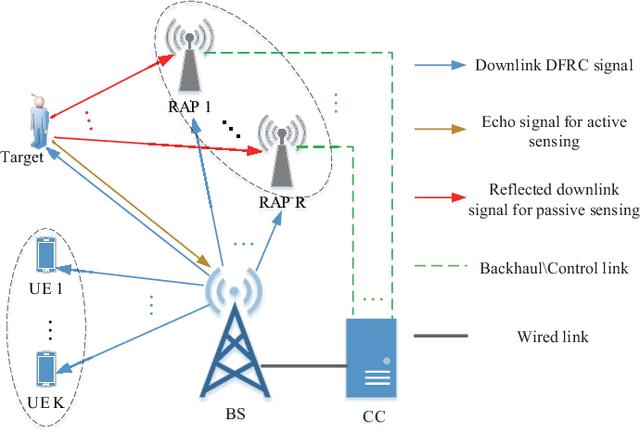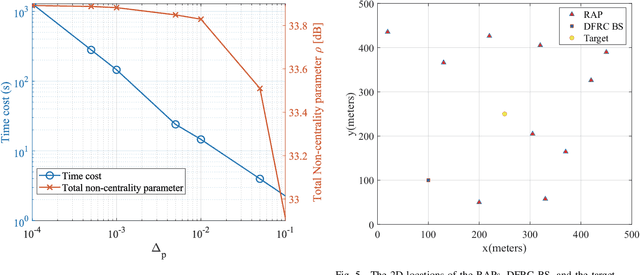Power Optimization for Integrated Active and Passive Sensing in DFRC Systems
Paper and Code
Feb 17, 2024



Most existing works on dual-function radar-communication (DFRC) systems mainly focus on active sensing, but ignore passive sensing. To leverage multi-static sensing capability, we explore integrated active and passive sensing (IAPS) in DFRC systems to remedy sensing performance. The multi-antenna base station (BS) is responsible for communication and active sensing by transmitting signals to user equipments while detecting a target according to echo signals. In contrast, passive sensing is performed at the receive access points (RAPs). We consider both the cases where the capacity of the backhaul links between the RAPs and BS is unlimited or limited and adopt different fusion strategies. Specifically, when the backhaul capacity is unlimited, the BS and RAPs transfer sensing signals they have received to the central controller (CC) for signal fusion. The CC processes the signals and leverages the generalized likelihood ratio test detector to determine the present of a target. However, when the backhaul capacity is limited, each RAP, as well as the BS, makes decisions independently and sends its binary inference results to the CC for result fusion via voting aggregation. Then, aiming at maximize the target detection probability under communication quality of service constraints, two power optimization algorithms are proposed. Finally, numerical simulations demonstrate that the sensing performance in case of unlimited backhaul capacity is much better than that in case of limited backhaul capacity. Moreover, it implied that the proposed IAPS scheme outperforms only-passive and only-active sensing schemes, especially in unlimited capacity case.
 Add to Chrome
Add to Chrome Add to Firefox
Add to Firefox Add to Edge
Add to Edge